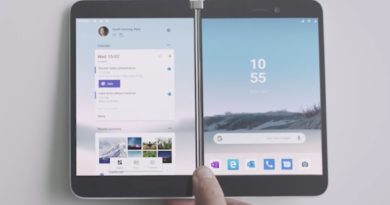Google Pixel 5 is my favorite phone of 2020 — here’s why
![]()
Since the first Pixel, I’ve used every generation of Google’s in-house designed smartphones. As part of my job I’ll use each new generation of Pixel phone for a few weeks then swap back to whatever swanky flagship I have on hand. It’s usually a Samsung phone or more recently the excellent, if over-the-top, Oppo Find X2 Pro.
At that point my Pixel will be kept as my backup handset and as the smartphone to take pictures with at events when I can’t be bothered to lug a DSLR around. Whatever faults the Pixel phones might have, they’ve consistently delivered very impressive smartphone camera performance.
But I recently swapped over to the $699 Google Pixel 5 and don’t feel like swapping back to a high-end $1,000 plus flagship. No, I haven’t taken a blow to the head. Just allow me to explain.
I’m in the fortune position of getting access to most of the major flagship phones and I love using them. The smoothness of a 120Hz display, the snappy response of a Snapdragon 865, the huge amounts of storage, and the expansive color-rich OLED displays are fantastic to use. And these phones look spectacular as well, with the Samsung Galaxy Note 20 Ultra resembling something that wouldn’t look odd on the set of a clean near-future sci-fi film. Heck, the Find X2 Pro comes wrapped in a lovely vegan leather.
I can’t help but love how slick Android is when it hasn’t had a third-party interface smeared onto it
By comparison, the aluminum-backed Pixel 5 with its comparatively compact 6-inch display and 90Hz refresh rate seems positively pedestrian. Its functional rather than fashionable design looks particularly dull in the Just Black finish.
It also has a pair of rear cameras, whereas every other major phone – excluding the iPhone 12 and iPhone 12 mini – has at least a trio of lenses to play with. And the Snapdragon 765G is simply fine when it comes to performance.
So on paper, the Pixel 5 seems a bit disappointing; you get a lot more for the same price with the Samsung Galaxy FE 2020. But then I started using the Pixel 5 as my main phone and those concerns melted away.

Pixel-perfect Android
The reason for that is the Pixel 5 is a fantastic showcase for how good Android can be if its left pretty much untouched.
Out of the box, the Pixel 5 comes running Android 11 with the Pixel Launcher on top. Think of it as the ultimate expression of Android, where most of it is vanilla Android with some smart extras from Google such as Hold For Me. That feature allows the Google Assistant to take care of alerting you to when an operator answers when you’re put on hold.
But such smart features aside, I can’t help but love how slick Android is when it’s not had third-party user interfaces smeared onto it. While new versions of Android no longer bring in quite the sweeping changes they once did – baked in gesture control probably being the last significant change – Google’s mobile operating system has slowly gotten faster and nicer to use each generation.
The Pixel 5 proves you don’t need a quartet of rear cameras, just some smart software.
Granted, Android 11 is far from perfect, but on the Pixel 5 it’s just lovely to use. Everything is simple to find, as there’s no extra fluff in the apps drawer. Compared to my Galaxy Note 10 Plus with its mass of pre-installed apps or the Find X2 Pro’s odd Oppo Relax app and slightly fussy settings, Android 11 on the Pixel 5 feels fat-free.
While Android has been criticized in the past for offering too much customization, awkward menus and fiddly widgets, when compared to the more locked down iOS, Google’s take on Android is a joy. Everything is neatly arranged and in its right place You can plumb the depths of the settings to go heavy on custom options, but getting to a simple setting is trivially easy.
I have my Pixel phone arranged similar to how I’ve had iOS devices organized, with my home screen just being a 5×5 grid of my most used apps; there are no widgets to get in the way. So while Apple coined the “just works” phrase, I feel that now applies to the Pixel 5, certainly in comparison to other Android phones.
Pixel 5: A camera that just works
I would also be remiss to not mention the excellent photography chops of the Pixel 5. It might lack the overall flexibility of multiple cameras, with just its main and wide angle cameras. But when it comes to phone photography, I just like to point and shoot. And the stellar shots the Pixel 5 delivers shows you don’t need a quartet of rear cameras, just some smart software.
Furthermore, despite the mid-tier chipset, running an unfettered version of Android means the chip isn’t bogged down and lets the Pixel 5 deliver an Android experience that feels just as fast as it does on phones with much faster chips. A 120Hz refresh rate would make it that little bit smoother, but 90Hz is more than fine.

Give me functional over fancy
And simply being fine is what allows the Pixel 5 to really show off Android. To get a little philosophical, phones are effectively windows into a digital world awash with information and things we want to swipe, tab, like, and laugh or despair at. So having a phone that doesn’t distract from that with extraneous hardware or software features is a breath of fresh air.
Take the Pixel 5’s rear fingerprint scanner as an example. It’s basic capacitive tech, but it’s tried and tested and works blisteringly fast.
The Pixel 5 is so good it will keep me away from an iPhone for another year.
Comparatively, the under-display optical fingerprint of the OnePlus 8T is more modern and provides a flashy animation when you use it. But it’s a lot less responsive and effectively acts as a fancy barrier that slows you down from actually using your phone.
Sure, these features are technically impressive and allow such handsets to have neat, clean designs. But they’re clear examples of form dictating function, while the Pixel 5 kicks in the opposite direction.

I also find that a utilitarian design makes the Pixel 5 a phone you can simply pick up and use. It’s far from ugly, and I like its slim bezels, the punch-hole selfie camera and the slight textured finish on its back.
But it’s far from flashy, too, meaning it’s a phone I can pick up and pop into a pocket without needing to worry about some high-end prismatic glossy finish getting scratched by a rogue key.
I actually think Pixel phones look good with a bit of wear and tear, as it shows how they are phones you just get on with using. Flagship phones, meanwhile, tend to instill a fear of damaging their eye-catching finishes. You’re practically compelled to swaddle them in a case thereby rendering all the work designers have done to create a phone that looks ‘just so’ in a certain light, a bit pointless.
So while the Pixel 5 might not live up to its price tag in pure specs, it offers a lot more in less tangible ways. It’s helped me realize how much I like Android and kept me away from finally returning to an iPhone for another year.
And it’s a phone that’s just so enjoyable and fuss-free to use, I’m not sure I’m going to tire of it anytime soon. So here’s to Google and whatever ever it’s working on with the Pixel 6.


